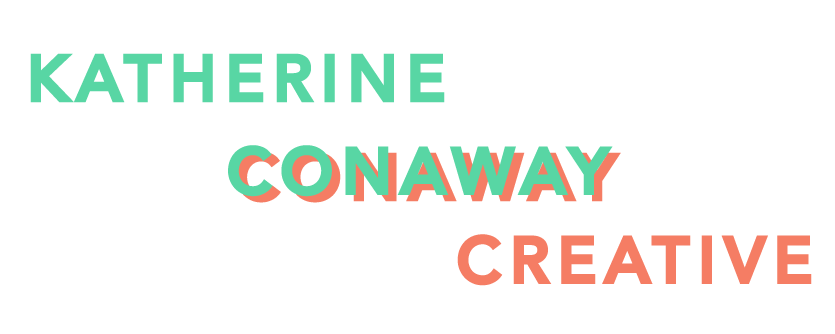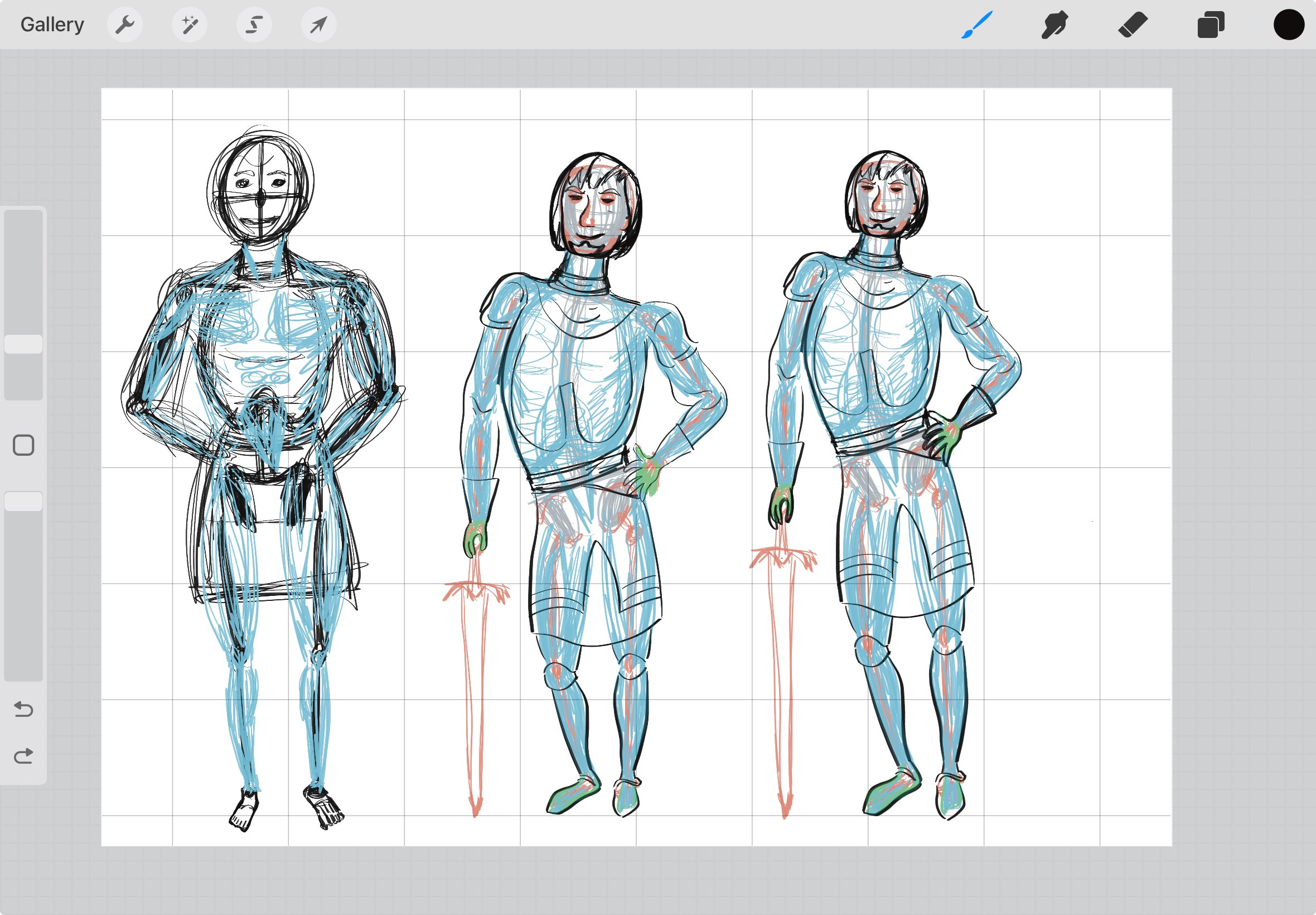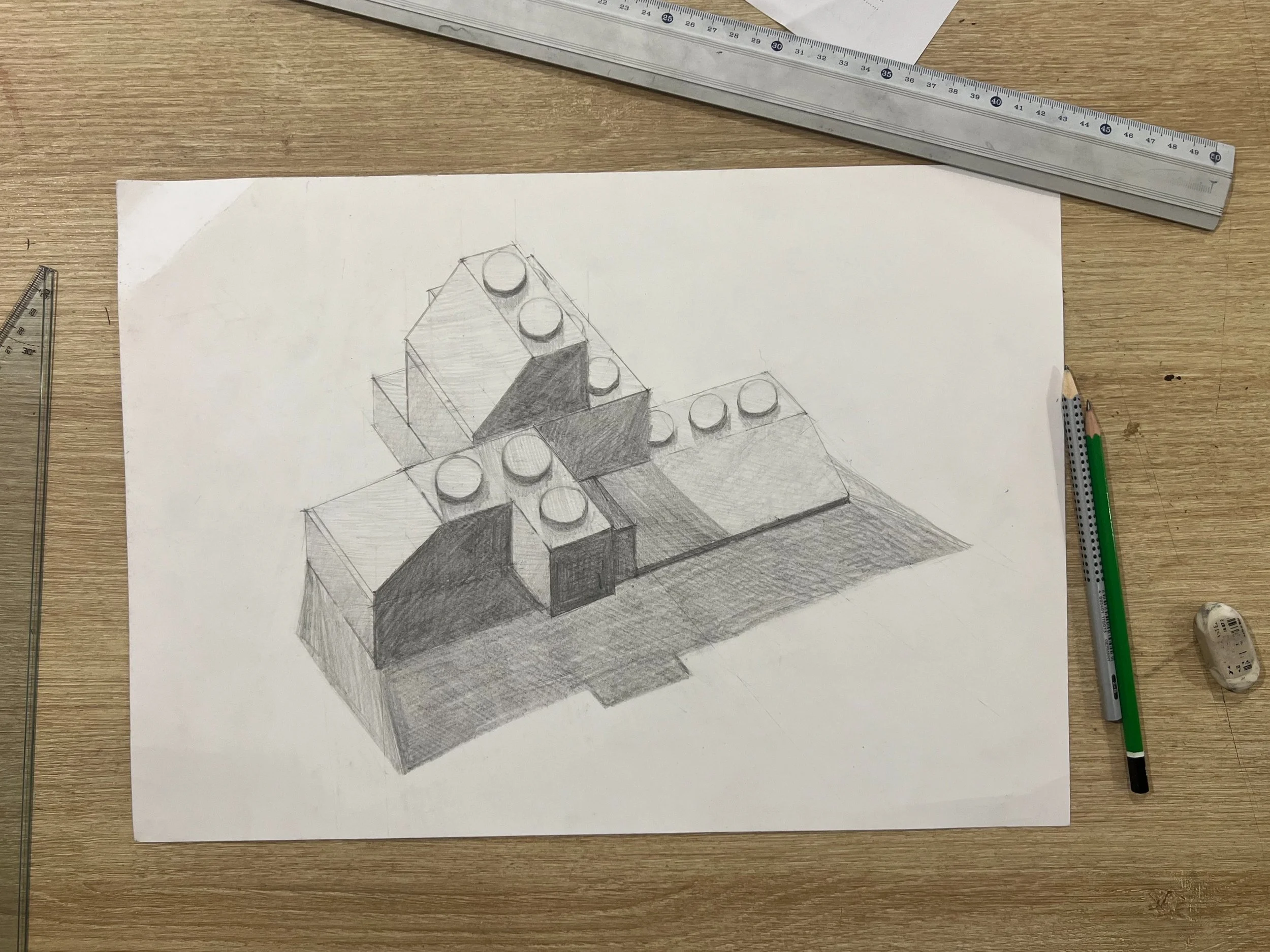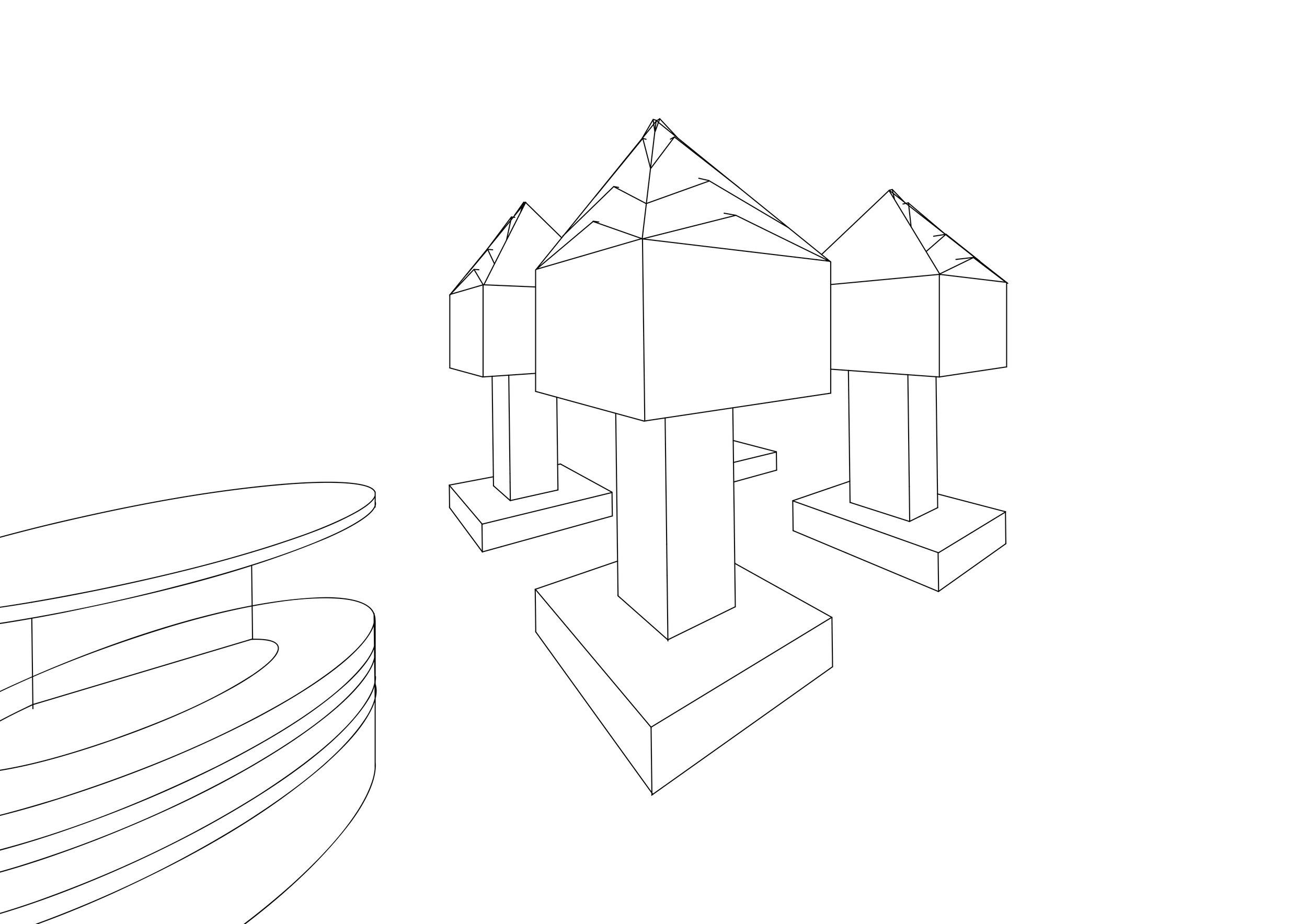Reflecting on My First Semester at ESMA Art School in France
This fall semester at ESMA in Lyon has been a whirlwind of learning, creativity, and new experiences. Starting art school as an adult and in a foreign country has been both fulfilling and challenging, and I’m grateful to be doing it!
I just finished my first semester of art school in France, doing the Entertainment Prepa at ESMA Lyon. All my classes for the program are preset by the school — there are four cohorts of our Prepa class, and I’m in the international cohort that’s taught in English (the other three are in French).
(Want all the details? Read my first post: I Just Started a Year of Art School in France!)
Probably the biggest thing I’ve thought about throughout the semester is that I’m adjusting and adapting to several things simultaneously: art school, school in France, and this particular specific school. So at any given moment, I’m not sure whether the way something is happening is because it’s an art program or for a French school or specifically ESMA — or all of the above!
Of course, I came to this program to learn skills I don’t have, so I’m also being challenged in most of my classes to attempt new things and push through the frustration to complete my assignments. And now that I’ve finished the first semester and can pull back my perspective from the details of an assignment to look at my work overall and see that I have had some growth.
Here’s a mix of my work across all my classes this semester:
Life in Lyon & Adjusting to Art School
I arrived in Lyon in late September, and it was as nice as I remembered it from my 2017 visit. I had trouble finding long-term housing (there’s just too much demand / competition, and I’m at a disadvantage as an American), so the first 2 months (Oct - Nov) I stayed in an Airbnb apt near Hotel de Ville and then the last month (Dec) in an Airbnb by Bellecour. Starting mid-January, I have a lease for an apt back up below Croix Rousse, so hopefully I’ll be able to settle in for the ~5 months of the spring semester.
This semester also marked my first in-person daily routine in 10 years. Since 2014, I’ve been working remotely and traveling, living a very flexible and independent lifestyle. I’ve always told my family and friends that I would consider "settling" somewhere if it felt like the right place for a good reason. Finding this program and getting to spend extended time in Lyon felt like that reason.
While it’s been a transition to be up, commuting, and at school at 8 or 9 am every weekday, I’ve enjoyed the change. Going to class, having more in-person interactions, making friends IRL (lol), and doing hands-on tangible work (none of our work last semester was digital) has been a refreshing and rewarding shift from my solo life and virtual work.
Starting at ESMA felt like diving into the deep end, but it’s been a rewarding experience to be an art student. My first semester was packed with assignments and adjusting to the school’s approach and expectations. The curriculum emphasizes a mix of technical skills and creative exploration, and while I struggle sometimes given my lack of experience with drawing & characters (and a weak imagination, honestly), I have been learning and making progress on some of the foundational skills I came here to learn — primarily in drawing.
My Classes
The prepa schedule is set by the school, so we’re assigned as a cohort to our classes. In general, we have ~25 hours of class each week. Here’s the list of my classes & instructors, along with my brief summaries of what we learned (we actually didn’t receive a syllabus or any written materials about the classes, so I can’t say my descriptions are 100% accurate, but they’re what I extrapolated from the experience):
Volume Atelier: Making physical maquettes [Arnaud Queré]
Photography: Basics of taking photos with DSLR on manual settings [Ben Millar]
Image Analysis: Looking at shots from films to start to identify the basics of composition and framing (new course this year) [Steve Aleu]
Anatomy: Drawing the human form [Manon LeFeuvre]
Technical Drawing: Focused on drawing in perspective, so far [Arnaud Quere]
Visual Arts: Essentially art history [Ben Millar]
Color & Texture: Painting with acrylics [Manon LeFeuvre]
French Language: Basics, no separation for our language levels [Clément Seurot]
My Projects
Over the course of the semester, we had a range of assignments across our classes:
Volume Atelier
Our first project was the music maquette, which we made individually, and then we got into groups to work on making structures from Disneyland Paris. My group is working on the Star Tour (Star Wars), which is due in January, so we haven’t finished yet. I was pretty pleased with my piano maquette—while it lacked "LES DETAILS" (imagine this in a French accent, as Quere often says), I still managed to create a recognizable and detailed piece. Cutting, painting, and gluing each individual key with tweezers felt like a small victory.
Photography
For the first part of class each week, the instructor would show us some references and talk about some technical aspects, and then we would practice taking photos—usually going to walk around the Confluence neighborhood the school is in but sometimes in the studio.
Image Analysis
Each class, the instructor prepared a printout with stills from various films, and we’d watch clips in class and learn terminology, definitions, and usage of the various technical elements.
The first thing we looked at was the short film by the Lumiere brothers, who were based in Lyon and helped invent motion pictures.
“The Lumière brothers were French inventors and pioneer manufacturers of photographic equipment who devised an early motion-picture camera and projector called the Cinématographe.” (Britannica)
“L’Arroseur arrosé” means “The Sprinkler Sprinkled” and is the “earliest known instance of film comedy, the first use of film to portray a fictional story, and the first use of a promotional film poster” (Wikipedia).
Anatomy
We started by drawing skeletons in class, then moved on to observational drawing (aka each other), looked at anatomical illustrations, and then began some character design.
Outside of class, we keep a sketchbook to practice drawing from life (only things that are or were alive, and no drawing from photos). Our teacher also organized some live figure drawing sessions at a local cafe that we could sign up for, so I went twice to those and got to practice drawing the nude model.
Technical Drawing
While I had some understanding of perspective from art history, I’d never drawn in it before. Queré teaches with a clear step-by-step approach (albeit very fast). Our assignments included 1-point perspective, 2-point perspective, adding cast shadows, and the "rabattement geometral" where we transformed a top-view drawing into 2-point perspective.
In general, Queré wants us to incorporate a LOT of details into our drawings (I don’t have any examples of other student work that I can share, but just know that they’re impressive detailed and creative — unlike mine). However, I think my last assignment involving stairs showed clear progress compared to my earlier work, even though imagination and world-building remain challenging for me.
Visual Arts
Primarily a lecture class with visual art references, history, and some textual analysis. With my degree in Art History, I’ve loved this class. I’ve even been extra (but hopefully not annoying) about it — talking with our instructor (Ben) and sending references & examples from my classes at Williams.
He had us each do a short 3-5 minute presentation of an artist from our home countries, which was really interesting to see. He also let me do a brief presentation on Formal Analysis, which reminded me how much I love and miss teaching. Our main grade for the semester was a written exam where we chose a pair of artworks to compare & write 3 essays about:
Durham Cathedral and Angkor Wat
Pope Innocent X by Velazquez and Francis Bacon
Turkish Baths by Ingres and Sylvia Sleigh
State Council Hall by Ilya Repinand Black Square by Malevich
I chose to write about Pope Innocent X, and I did well on my paper — thank goodness! It would be bad if I couldn’t do a good job given that I have a degree in Art History, but it’s still been a while since I wrote a paper.
Color
This has been my most comfortable class, though I still have plenty to learn with color and painting. Assignments included a greyscale painting of our keys, a Pixel art recreation of the Mona Lisa, and painting a Mars candy bar.
For the pixel assignment, I spent about 20-25 hours working on my Mona Lisa, and I thought I did a pretty good job. My colors were brighter than the reference, which was part of the assignment, so that impacted my grade.
My Mars bar looked pretty good (though I don’t know my grade yet). LeFeuvre’s guidance during class made a big difference, especially for the texture of the chocolate. Her adjustments were impactful, making the end piece look much better, but I think I still improved my skills working on the piece.
French Language
As the international cohort, we take French as a supplement to living in France. The curriculum is relaxed since our classmates have varied language levels, but I’d love a more ambitious class to push me toward fluency.
Transversal Week
Our Transversal Week was a unique part of the semester where all our classes assigned work on the same theme. This year, the theme was "van life." While some of my classmates were less excited about it, finding it too restrictive & banal for their imaginative tastes, I was quite happy because it was something my brain could conceptualize.
Part of the reason I never thought of myself as an artist before is because I’m not creative in the imaginative sense — I don’t really come up with fantasy worlds or fictional narratives. But as I’ve gotten older and wanted to share more stories and information, I realized that I wanted & needed more visual means to do that.
It’s also been rewarding to physically paint and draw (in contrast to my digital work & socializing). As I started creating more, I decided I needed more technical skills, which led to my creative sabbatical this summer and coming to ESMA this fall.
So, I’m much more "creative nonfiction" as a writer and more of an illustrator than a capital-A Artist. I think that’s fine since it serves my purposes, makes me less precious, and hopefully has more commercial possibilities.
Assignments:
Anatomy: Create a character sheet featuring dynamic poses of a character and pet, with high contrast between the two characters and conveying strong feelings and storytelling through the poses. One pose was in color, while the others were greyscale.
Color: For the landscape painting, we were tasked with replicating the exact nuances of a chosen photo and incorporating our vehicle into the scene.
Design: We created a perspective drawing of the interior of our van, including as many objects & details as possible, done in pencil with a focus on precision and perspective.
So I created work that drew on my nomadic lifestyle and experience living on a boat. I designed my character as myself and included my cat, Ollie. I drew a basic interior of a van featuring Ollie with a few details (not my strong suit!), and for my landscape painting, I used a photo I took on a solo road trip to the Isle of Skye in Scotland back in 2017.
I was really stumped on how to even start making my character design, so I asked DALL-E to make some examples for me. A classmate also did a couple cute sketches of me and my cat, which was really sweet.
Semaine Banalisée
Our last week of the semester was a Semaine Banalisée, which translates to "unmarked week," meaning there were no grades assigned. It was a refreshing change of pace as we focused on group presentations and workshops rather than traditional assignments.
The auditorium, which doubles as a movie theater since ESMA shares the building with CineCreatis (a film school), hosted some fascinating presentations. One afternoon, we watched final films created by students from previous years, showcasing the impressive culmination of their studies. Another day, the animation teacher gave a detailed presentation on the animation process, using a student group’s final project as a case study. It was incredible to see how much work goes into a single animated piece and to understand the layers of collaboration involved.
In a hands-on workshop with Queré, we made stop-motion test videos. I’ve always loved watching stop motion, and creating some practice videos ourselves was so much fun. I think there’s something undeniably magical about stop motion — our brains recognize the difference in movement compared to real life or traditional film, but we can still conceptually follow the action. This gives stop motion an enchanting, almost whimsical quality, as though we’re watching a series of tiny magical moments unfold.
Reflecting on the Semester
While I was definitely not the best student — in terms of quality of work produced, initial skill level starting out, and time spent on assignments — I can see that I’ve made progress over the three months of class, especially stepping back now that I’m not in the weeds of an assignment.
Balancing part-time work and volunteering as a board member for the National Juneteenth Museum in Texas made it harder to focus entirely on school, but it was important for me to continue my work with NJM and also helpful to maintain some income.
The French grading system has been another adjustment. Grading is on a scale of 0 to 20, with 10 as the passing grade, but it seems to be based on perfection, not progress. Even if we haven’t yet learned certain skills, they’re still part of the standard we’re judged against. My marks have ranged from 6.5 to 16, with the high mark being an outlier thanks to my Visual Arts exam performance. Most of my assignments have been in the 8-11 range, which often isn’t even technically passing! It’s a good thing I’m doing this program for fun and learning, not for great grades.
Looking Ahead
As the semester wraps up, I’m proud of what I’ve accomplished so far. From improving my artistic skills to navigating life in a new place & foreign country, it’s been a season of new experiences & growth. I’m grateful to be home for the holidays to recharge, warm up, have a break, and get ready for the next semester.
When I come back in the spring, I hope to build on this foundation — pushing myself further creatively, deepening connections, and embracing every opportunity this journey brings.





















































































































































































































